ALL...ABOARD!: Inns, Summer Homes, and Camps
Introduction
Text-to-speech Audio
Images
Cyanotype of Perkins Inn that was located in Hopkinton Village.
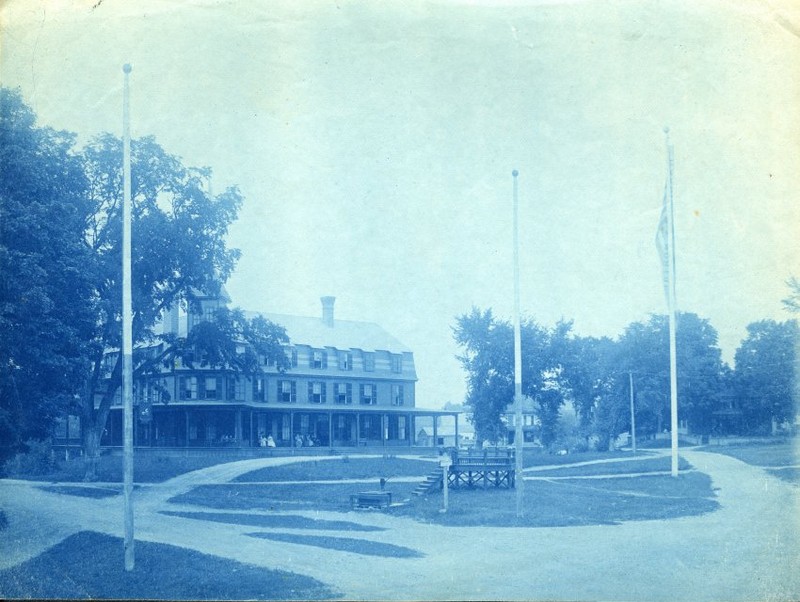
Cover of Perkins Inn advertising brochure with image of the inn.
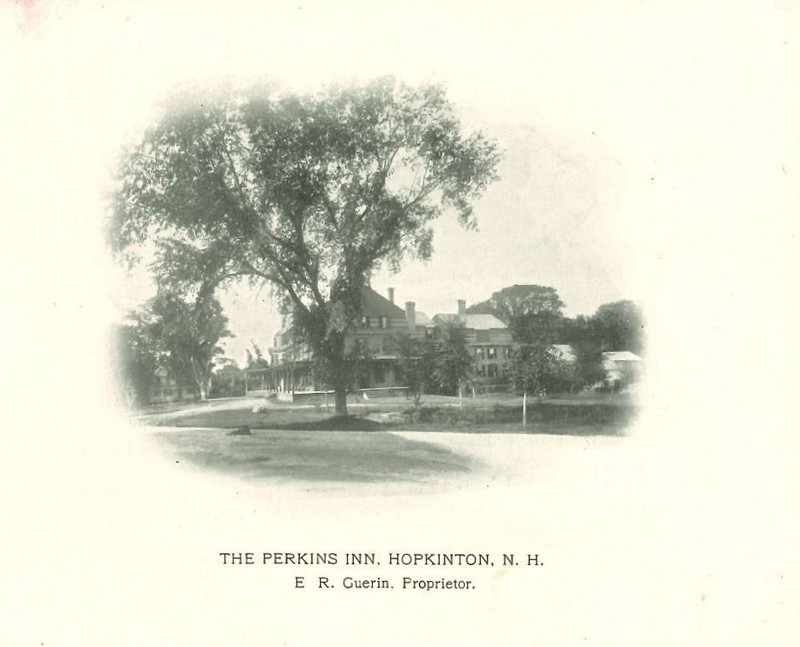
Perkins Inn advertising brochure highlighting the easy accessibility by rail.
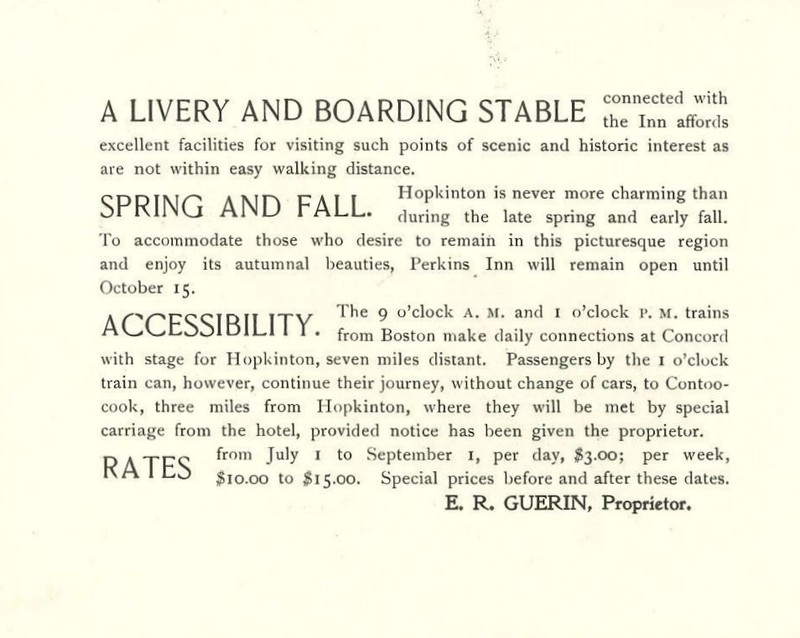
Cover of real estate brochure.
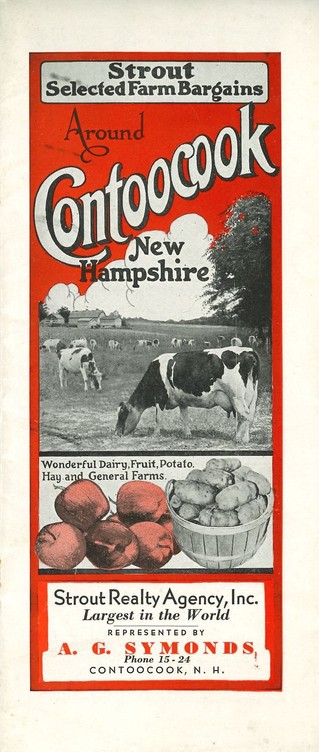
Real estate brochure highlighting the easy accessibility by rail.
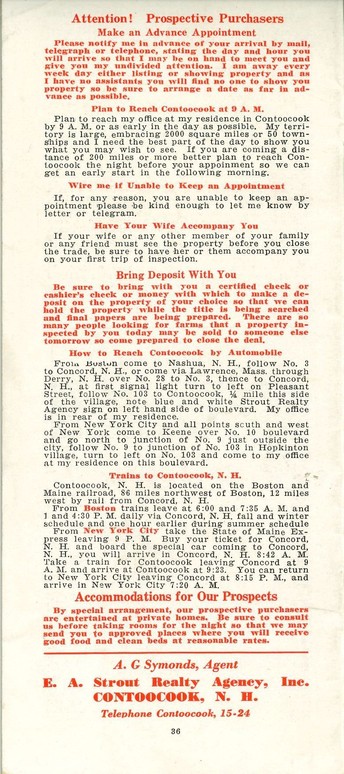
Advertising flyer for The Rolfe Pond House of Hopkinton, N.H.
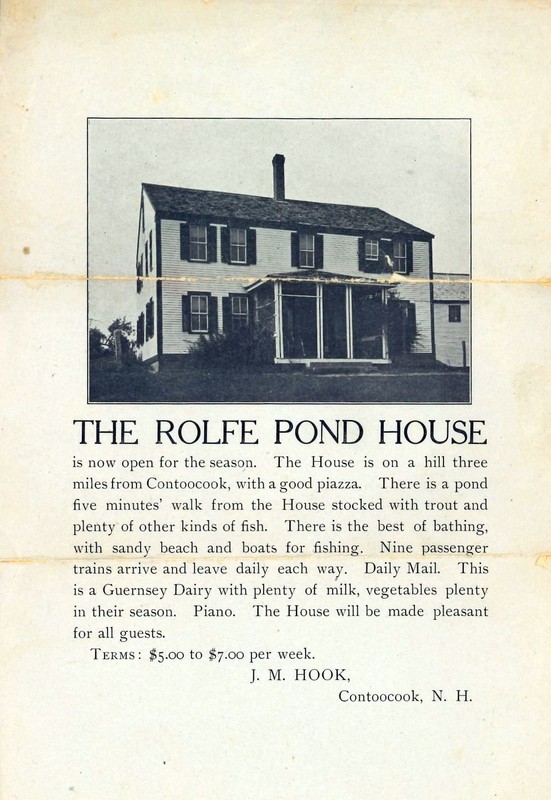
Cover of Mt. Lookout House advertising brochure.
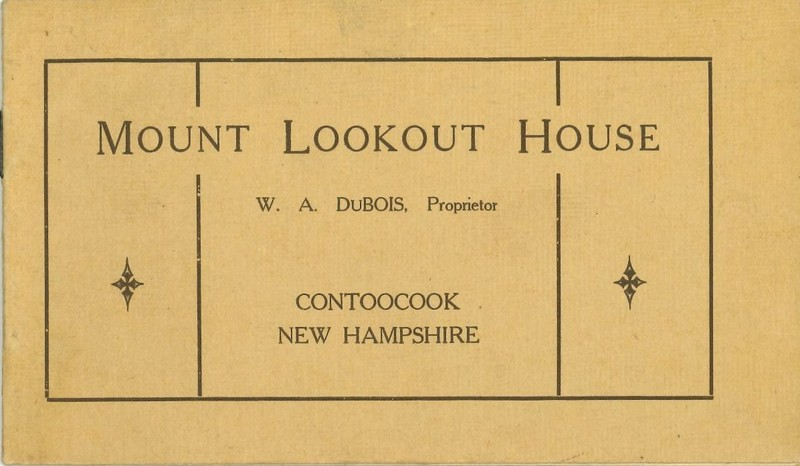
Mt. Lookout House advertising brochure highlighting the easy accessibility by rail.
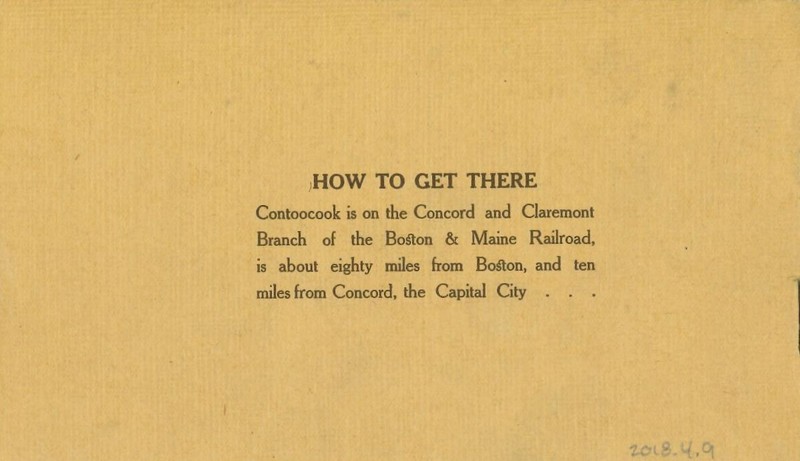
Postcard image of cabins at Camp Merrimack located in Hopkinton, N.H.
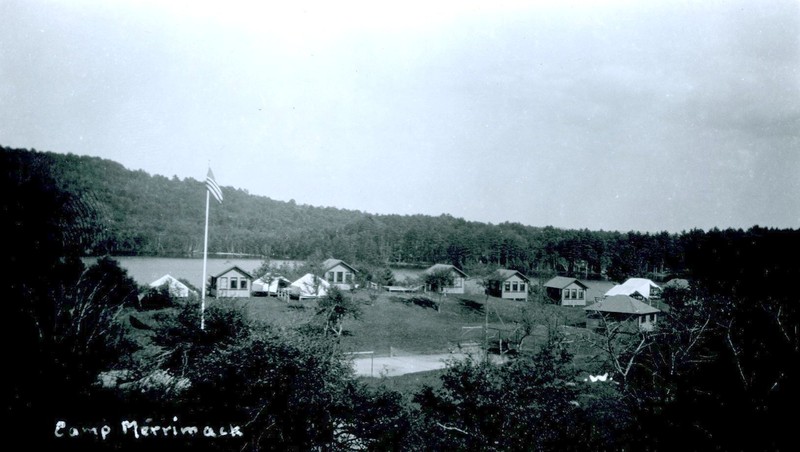
Postcard image of tennis courts at Camp Merrimack located in Hopkinton, N.H.
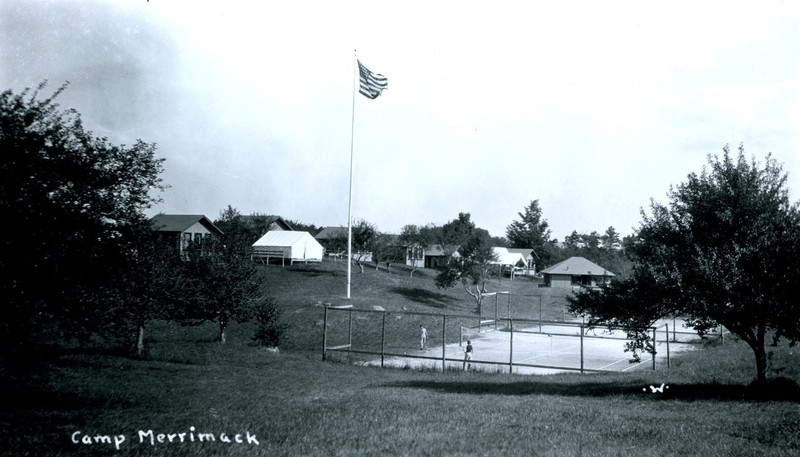
Backstory and Context
Text-to-speech Audio
One such hotel was the Perkins Inn, located on the Village Green of Hopkinton Village. Its advertising highlighted the easy accessibility by rail, as did other inns in town. Unfortunately, the Perkins Inn was leveled by fire in 1907.
In 1914, the Contoocook Board of Trade published, "Contoocook Its Business Advantage and Natural Beauties," a booklet describing the many advantages of visiting or relocating to Hopkinton. One section, titled "Hopkinton as a Summer Resort," reads as follows:
There is not another place in all New England that can offer as much to the vacationist as Contoocook. Nor is there one as accessible or centrally located.
...Remarkable views may be had from many of the roads leading over the surrounding hills. From the summit of Mount Lookout and Putney Hill an uninterrupted view of valleys, distant hills and mountains can be obtained...
Several summer Hotels and many farm houses accommodate guests at very reasonable rates."
Camp Merrimack, located in the area formerly known as Cloughville, was established as a summer camp for Jewish boys in the early 20th century. It changed ownership in the mid-1950s and operated for a number of years as a general summer camp. Today the property is owned by the Greek Orthodox Metropolis of Boston and is operated as a year-round camp and retreat center.
Ken Smart of Hopkinton, who worked for the railroad from 1947-1952, remembers the hectic summer months at the Contoocook Freight House:
The summer months were the busiest as we dealt with the coming and going of the campers of Camp Merrimack and the additional summer boarders that came to town by train. It seems like the freight house [located where TD Bank is today at 884 Main St, Contoocook, NH] would be filled with trunks and duffle bags that all had to be weighed and tagged around July 1 and again the end of August.
Sources
Contoocook Board of Trade. Contoocook Its Business Advantages and Natural Beauties. Contoocook, NH . Clough Press, 1914.
Hopkinton Historical Society. A Walk Through Two Villages Contoocook and Hopkinton. Hopkinton, NH. Hopkinton Historical Society, 2009.
Lord, C.C. . Life and Times in Hopkinton, N.H.. Concord, NH. Republican Press Association, 1890.
New Hampshire Antiquarian Society. Life and Times in Hopkinton 1735-1970. Hopkinton, NH. New Hampshire Antiquarian Society, 1989.
New Hampshire Antiquarian Society. Hopkinton New Hampshire 1765-1965. Hopkinton, NH. New Hampshire Antiquarian Society, 1965.
Tyler, Mala Duclos. Hopkinton and Contoocook. Charleston, SC. Arcadia Publishing, 2012.
HHS collection
HHS collection
HHS collection
HHS collection
HHS collection
HHS collection
HHS collection
HHS collection
HHS collection
HHS collection
